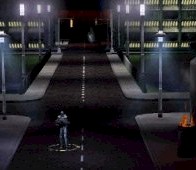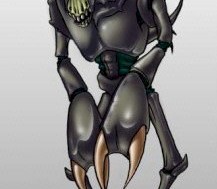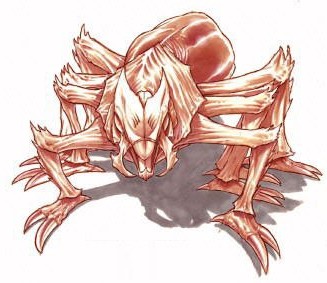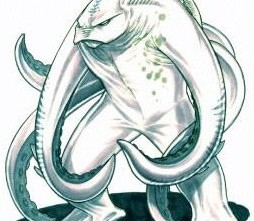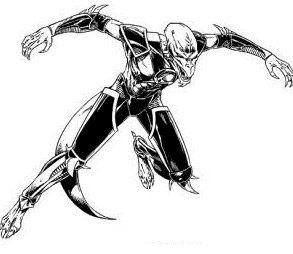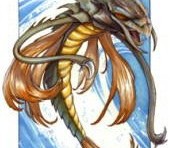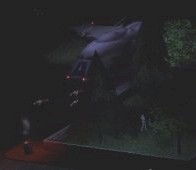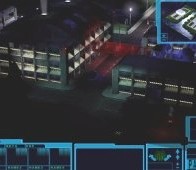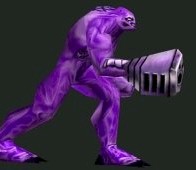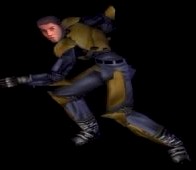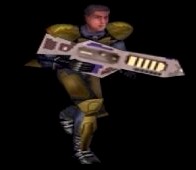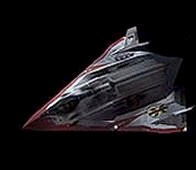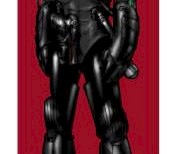Dave Ellis: Genesis

Part Three: X-COM GENESIS
Quick note: If coming in late, you can read Part One here and Part Two here .
And now we get on to the main event – where finally X-Com fans will get to find out about the game we all wanted so badly! In terms of what was previously known, surprisingly little info is available. Lets start of with a quote from an online source, circa ECTS 1999;
“This is the re-working of the original X-Com games, led by Dave Ellis. Not on show at ECTS, but mentioned more than once! The only official line at present is that "Genesis will stay true to the original game", and will feature the "usual enemies" and will be set on Earth. Hasbro are trying to flesh out a gaming universe to match the likes of Star Trek - characters from each of their X-Com games will occasionally be referenced in other games. It's clear that Genesis will be anything but the last X-Com game. There will even be an internal "X-Com Bible for Developers" so that the game universe can be consistent while constantly evolving.”
As for the “true to the original game” part, absolutely! Genesis was designed to follow the same basic game formula as UFO Defense and Terror from the Deep—research, buying/building, recruiting, intercepting UFOs, and fighting tactical missions. The mechanics of the game in the strategy layer (the Geoscape and all related screens) were virtually identical to those of the first two games. The combat portion of the game was going to have a very similar feel, but it would have had slightly different mechanics (real-time, for instance—more on that later).
That said, we were building the game from the ground up, using state-of-the-art 3D technology, not updating the old engine. By the time we started on Genesis, the UFO/TFTD engine was much too dated. We needed something new.
The sales figures are debatable, really. Obviously, we would have liked to sell a million copies! The truth is, however, all of the X-COM games produced to date combined probably haven’t sold a million copies. It’s been a while, so I can’t remember the figures, but I don’t believe that any one X-COM title sold more than 250,000 copies total.
We had actually talked about a straight update of the original, but I fought the idea. I thought it was too soon for that at the time. Plus, there were some complaints that TFTD was nothing but a “rehash of the original”. I thought a new game would not only go over better with the fans, but also be a lot more fun to work on.
By way of comparison, Civilization II sold about 1.2 million copies and Grand Prix II sold right around 1 million copies. Some present-day comparisons include The Sims at around 2 million copies and Roller Coaster Tycoon at around 1.5 million (based on what I’ve read).
So, as you can see, the X-COM series was, by comparison, more of a niche market—about the same as a popular flight simulator. Actually, probably a bit better than that. A title that sells 250,000 copies is considered a very strong game in this market—provided the development budget is fairly modest, it could be considered a hit. As a rule, the X-COM games were quite inexpensive to develop.
I’m basing this on the X-COM numbers I saw back when I was still at MicroProse, mind you. I have no idea what the compilations sold. I also don’t know how well X-COM E-mail and X-COM Enforcer sold.
In keeping with the plans for Alliance at the time (it was being developed in Hunt Valley by this time) and with the original game, we planned on having several character classes for Ethereals, Sectoids, and Mutons—grunt, leader, and elite classes. As in Alliance, the more advanced the alien class, the stronger it was and the better its attack. Both the Sectopods and Cyberdiscs were to have been upgraded as well. There were variants with different weapons (rather than every one of them having the same attack). We had updated the look of the aliens a bit (made them scarier for the most part), and each class had its own distinct look as well.
We also had a cool twist planned for the Chryssalids. They could still turn your soldiers into zombies, but they could also turn other aliens into zombies. In times of duress (or when under the player’s psi control), a Chryssalid might turn a Sectoid into a zombie, for example. The Sectoid-zombie would have Sectoid characteristics as well as those of a zombie. And, when the Sectoid-zombie bursts into a new Chryssalid, it becomes a Sectoid-Chryssalid hybrid—a Chryssalid with Sectoid intelligence! (There were also Muton and Ethereal variants as well.)
The returning cast from TFTD was a bit smaller. We were bringing back the Aquatoids, Tasoths, and Hallucinoids.
Genesis would have introduced a number of new aliens as well:
Caretakers: Dog-sized spider-like creatures that had the ability to crawl on walls and ceilings. They had a ranged web attack and a biting attack. Caretakers were offshoots of creatures called Housekeepers, which were to have been introduced in Alliance.
Galvanos (pronounced “gal-VAH-noes”): These 6-tentacled underwater creatures had an electrogenic ventricle (similar to that of an electric eel) that allowed them to produce bursts of bio-plasmic energy to attack at range, or concentrated electrical bursts at close range.
Stalkers: Genetically engineered assassins with amazing marksmanship and incredible speed. These creatures have specialized skin cells that allow them to become almost invisible by blending with the surrounding terrain and/or structures.
Transmoggs: A naturally evolved species in service of the Ethereals, Transmoggs were shape-shifters that could take the form of just about any animate or inanimate object of similar size. They would ambush the player’s soldiers by posing as objects in a room or even as human civilians or X-COM operatives. They attack by shifting back to their native form and fighting with their claws and teeth. They also have a psionic pain attack, but must be in contact with a target to use this. They had the ability to leap as far as 10 meters and were very fast. They didn’t show up on normal tracking devices when not in native form, so research would have produced a “Hyper Tracker” to find them when they were camouflaged.
Waterbugs: These were sort of the aquatic version of the Caretakers. Instead of web and bite attacks, they had a sonic ranged attack and a venomous sting.
We also planned to bring some of the weird alien plants that were seen in the first three X-COM games into the actual combat (rather than using them as simple set dressing). We had a half-dozen different hostile alien plants that would attack the player’s troops in the field.
We also planned to have human enemies as well. The storyline of Genesis lent itself to the presence of human collaborators who were helping with the aliens’ plans. The player would have run into these evil humans in the second half of the game as the plot unfolded.
The absolute honest answer is that we hadn’t really figured out what the Apocalypse aliens were all about. We were hoping to kind of breeze by that point and get back to the original aliens. Sorry I don’t have a better answer, but that’s the honest truth.
Here’s the Genesis story setup (directly from the design document):
It’s September 8, 2805, just eight days after X-COM closed the last dimension gate, and clean-up crews in Mega-Primus are still in the midst of clearing the rubble from the latest alien incursion (chronicled in X-COM Apocalypse).With no warning, all communications with Earth installations on Mars and in the asteroid belt are lost. Patrols sent to investigate are lost without a trace. X-COM places its Earth forces on alert, but they are still scattered and disorganized in the wake of the Third Alien War. To top it off, all the new weapons and defense systems based on the trans-dimensional aliens’ disruptor technology ceased to function the moment the dimension gate was shut, leaving Earth forces with ships and troops that are poorly equipped to deal with any major threat.
Less than a half hour later, communications with Tranquility and the rest of the lunar colonies are cut off—no warning of impending problems, just a complete cessation of comm traffic. Moments later, the Earth Defense Network satellites detect a massive alien fleet moving toward the planet. Every X-COM ship is immediately scrambled, but the battle is short and bloody. Less than an hour after its initial detection, the alien invasion fleet settles into Earth orbit.
Moments later, the alien ground assault has begun.
In the Frontier, 100 light-years from Earth, all official communications traffic from Earth and her in-system colonies and outposts is cut off without warning on September 8. Not knowing what has caused the situation, an immediate ban is placed on all commercial and military starship traffic between the Sol system and the Frontier.
For weeks, there is no word whatsoever from Earth, and unmanned probes sent to investigate disappear without a trace. Then, starting on September 22, several tight-band transmissions are picked up by X-COM listening posts on the edge of the Frontier.
The messages come “Earth Force”—an ad-hoc group of human freedom fighters. The messages detailed the alien invasion. Every major city on the planet was now under alien control. Mega-Primus, the center of all X-COM forces on the planet, had been the first to fall. Every day, the aliens were spreading their forces farther over the face of the planet to either eradicate or enslave all humans in the outlying areas.
For the time being, the soldiers of Earth Force were holding their own. Steering clear of the major cities, Earth Force squadrons had managed to secure and hold a number of small population and raw material acquisition centers on several continents, but the aliens were gaining ground daily. For security reasons, the individual Earth Force cells are not aware of the location of all of the other cells. The unfortunate consequence of this is that they are unable to mount a large-scale campaign against the aliens. With their forces thus scattered, it was only a matter of time before they had captured or killed every human on the planet.
The leader of the freedom fighters, an ex-X-COM Captain named Carrie Ogawa, ended the last of the short transmissions with a plea for help. The aliens were pressing their offensive and forcing Earth Force troops into a purely defensive role. At best, the freedom fighters in the hardest hit areas could only be expected to survive for a month to six weeks. Unless X-COM could muster forces on the Frontier and send aid, Earth would be lost altogether.
The X-COM commander makes immediate plans to send a huge force of X-COM ground troops, armed to the teeth, to investigate, and decides to take command of the mission personally. Accompanying the soldiers is a contingent of scientists and engineers to act as support crew to the military personnel. Their goal: to retake Earth and return humankind to dominance.
Four Jamestown-class Star Ferries, huge long-range craft originally designed as self-contained bases to provide living and working facilities for colonists either on a planet’s surface or in orbit, are immediately moved into the orbital shipyards at Transtellar, where they are upgraded with the latest in lab and manufacturing facilities, detection and communications equipment, defensive shielding, and ship weaponry. Accompanying the Star Ferries is a fleet of Patton-class military cruisers.
After the upgrades are complete, the four colony ships—Jamestown, Botany Bay, Tranquility, and Yorktown—are loaded with personnel and equipment. On October 12, 2085, they set a course for Earth and leap into hyperspace for the long journey home.
The X-COM ships arrive at Earth on December 14 after their two-month journey. Dropping out of hyperspace behind the Moon, the four ships minimize their power signatures so as not to be detected. As they move out of the Moon’s shadow, their sensors show…nothing. Earth’s space lanes are completely void of any spacecraft activity, alien or otherwise. The X-COM commander, aboard the Tranquility, orders the fleet to proceed with caution.
Suddenly, multiple spacecraft launches are detected on Earth. A fleet of alien ships takes to the skies on an intercept course, several heading toward each of the X-COM craft. The Star Ferries take evasive action and attempt to set an approach vector, while the Pattons join the battle in earnest. Intercept craft are launched to defend the large, slow moving craft but, despite their agility and firepower, they don’t fare much better.
The fight is short but fierce. Despite being severely outmatched the Pattons and the fighters inflict heavy damage on the alien fleet, taking out more than half of their ships. Still, the aliens gain the upper hand, and the X-COM battlecruisers are destroyed one by one. A number of the alien vessels break through the foundering X-COM fleet and proceed on an intercept course toward the Star Ferries.
The Botany Bay is the first to succumb. Losing power, it drops like a rock into Earth’s atmosphere. Yorktown and Jamestown quickly follow, each dropping out of view in a ball of flames.
Soon it is Tranquility versus three alien vessels—two cruisers and a light frigate. The Tranquility and her remaining fighter manage to take out the two cruisers—but not before the control systems of the colony ship are critically damaged. The huge vessel follows the rest of the doomed X-COM fleet into the atmosphere. Relentless, the alien frigate continues its attack, following the Tranquility toward the surface.
Through superhuman effort, the helmsman of the Tranquility manages to angle the ship toward an isolated wilderness area, adjusting the trajectory so that the ship isn’t destroyed on impact. Tranquility hits the ground with tremendous force nonetheless, ripping a huge furrow in the ground miles long, and almost completely burying most of the ship’s superstructure. Despite suffering a great deal of damage and a huge number of casualties, the Tranquility has made it to Earth.
Unfortunately, the alien frigate is right there with her. Luckily, the Tranquility’s scanners show that no transmission has yet been sent to indicate the location of the crash site. Acting quickly, the X-COM commander assesses the situation and musters a small team of soldiers. Armed only with what they are able to scavenge from the Tranquility’s hangar deck area, the team exits the ship and launches a squad assault on the alien vessel.
Apparently, the alien craft suffered more damage than was anticipated. Most of its crew is dead, and the remaining aliens are scattered throughout the ship and in the impact crater created by the Tranquility’s less than perfect landing.
The aliens manage to mount moderate resistance. Although the fight is far from easy—the aliens have a distinct advantage under cover of darkness—it is relatively short. The X-COM squad is victorious—they manage to eliminate all of the frigate’s crew before they can get off a message as to the whereabouts of the crash site.
Fearing that the alien craft will be discovered, the X-COM commander orders it destroyed. Scavenging all they can beforehand, the X-COM squad sets explosive charges in the frigate’s power core, destroying the vessel.
Safe for the moment, the X-COM commander turns to the task of mustering what’s left of his crew and getting on with the mission they were sent here to perform—a mission that will now be much more difficult than originally anticipated.
The battle described in the story above would have been the first mission of the game—taking place right after the opening animation. As you can see, the opening story would have literally drawn the player right into the game. After the initial mission was complete, the Geoscape would appear and the game would proceed.
The logo that appears on the drawings on the site is one that Brian created if I remember correctly. We had a bunch of logo sketches, but there hadn’t been a decision made on an “official” logo.
In fact, there was still some doubt as to whether we could use the title Genesis. Apparently, some of the company lawyers feared reprisals from Sega because they had a game system by the same name. We thought that was rather silly, considering how dissimilar the products were (and the fact that the Sega Genesis had been discontinued a decade earlier). Personally, I would have thought they would have been more concerned with X-COM Alliance’s title, which was almost identical to X-Wing Alliance, which was due out at about the same time. But what do I know? I’m not a corporate lawyer.
For example, you could move a soldier from point “A” to point “B” by simply selecting him and clicking on the destination. The soldier in question would comply in real-time, taking as direct a route as possible. In this way, you could play the game almost as you would a real-time strategy game (although the pacing would have been like that of the Apocalypse real-time mode).
If you preferred more control, however, you could pause the game and give detailed orders, setting way points and so on. So, you could order the soldier to go to point A at a run. At point A, you could give an order to crouch and switch weapons, and then move to point B. Then, at point B, go prone and hold position. In this manner, you could take an unprecedented amount of control over the actions of your troops by queuing up orders at each waypoint along the way.
In addition to individual troop movement, we had a number of group movement formations available. Unlike the ones in Apocalypse, our formations were based on actual military formations, with each soldier in the formation knowing his/her role in that formation—taking point, covering the rear, etc.
Troop development was, indeed, very much like it was in the first two games—your troops gained skill with experience and/or training.
Recruitment was a bit different in this game due to the nature of the story (see the game intro above). Because X-COM was in the offensive role this time, they didn’t have unlimited personnel and monetary resources. They had to recruit personnel from the populace of the Earth. So, after a successful mission where X-COM liberates a city from aliens, for example, the people in that city are added to the available pool of human resources available for recruitment. This was a very tangible reward for good mission performance!
Here’s an overview from the design document:
UFO Search and Recovery: Soldiers are sent to the site of a UFO that has been downed by an interceptor. The goal of the mission is to kill or capture the surviving aliens and recover as much as possible from the wreckage of the ship.UFO Assault: Soldiers are sent to the site of an intact UFO that has landed. Although this mission is usually much more difficult than the Search and Recovery mission where some of the alien crew is always killed in the crash, the goals are essentially the same.
Terror Mission: Soldiers are sent to a human-controlled city where a group of alien terrorists are attempting to kill or enslave the human population and take control of the city. The goal is to eliminate or capture all the attacking aliens, while also preventing as many civilians as possible from getting killed in the process. Success in Terror Missions is much more imperative in Genesis, since every human city that falls under alien control reduces the player’s monthly resource income.
Liberation Mission: Soldiers are sent to an alien-controlled city or facility (such as a labor camp) to wrest control from the alien captors. The goal is identical to that of a Terror Mission. The difference here is that the aliens are already entrenched, which makes it a much more difficult endeavor.
Alien Facility Assault: Soldiers are sent to the site of an alien facility. The goal of the mission is to eliminate or capture all of the aliens and recover as much as possible from the facility. In Genesis, this mission category encompasses a number of different mission sub-types, each of which takes place at a different alien facility. Alien facilities include bases, prison camps, weapons depots, communication centers, and UFO bases. The result of a successful mission at each different facility yields a different kind of reward for the player.
X-COM Base Defense: Aliens invade one of the player’s bases. The soldiers therein must defend the base. The goal (obviously) is to kill or capture all the invading aliens. As in Apocalypse, some of the scientists and engineers stationed at the base may be present during the attack. If this is the case, the player is in control of them—they can do what the soldiers can do, albeit less effectively—but the primary goal where they’re concerned is to keep them safe. Non-combat personnel should be used in battle only as a last resort.
Scripted Missions: The game includes a variety of scripted missions that play pivotal roles in Genesis’s story progression. One example is the first mission of the game, which is always the same. Other scripted missions will be developed as the design progresses. There will be up to 20 scripted missions in Genesis, all of which may or may not appear in any one game.
Some of the missions would have been primarily non-combat in nature. For example, the player might have to escort a team of scientists into an alien facility to retrieve data, or infiltrate an alien prison to rescue a prominent scientist who is vital to continuing research. We wanted to have a wider variety of tactical action in Genesis while still retaining the combat missions that were so much fun in the previous games.
Base building would be handled similarly to the previous games. To tell the truth, we hadn’t gotten to that in the development yet, and we were still discussing how to present it. However, players would have been able to build and modify facilities just as they did in the first two games.
We were starting Genesis with Interceptor-level technology. Many of the weapons discovered in Interceptor were available (in hand-held form) in Genesis. We were also coordinating with the Alliance team to make our weapons look and act similarly to the ones used in that game. We also brought back updated versions of some of the best weapons from the series—Auto-Cannons, Gauss Rifles, Vibroblades, and so on.
As in the other games, the weapons that became available later in the game in Genesis were based on (or copied from) alien technology or, alternately, were developed in direct response to the discovery of some key feature of alien physiological weakness.
There are literally too many weapons to list and describe (about 40 pages worth of the design document is devoted to the subject), but some of the weapons included psionic grenades, plasma flamethrowers, plasma pulse cannons, Muton hand cannons (a weapon nicked from the Muton grunts), and a super-accurate sniper rifle.
Of course, there were to have been a number of new armor types as well (6 in all), including stealth armor (based on the abilities of the Stalker aliens) and armor that shielded against psionic attacks. And, yes…armor was available at the start of the game! (That was another one of my minor TFTD gripes—why did X-COM forget how to make armor between the First and Second Alien War?)
Alliance was to have given players a glimpse of a far-off alien system and, had that game been released and successful, ensuing sequels would have had the Alliance troops encountering aliens in the aliens’ home environments. The Patton and her crew were stranded thousands of light years from home, so that branch of the X-COM series was the logical choice for the exploration of alien home worlds.
This, in fact, was another reason for the title Genesis.
We never got into details, but that was the basic gist of it.
Also, explosions would have been blocked by buildings and other objects (to the extent of the object’s hit points). If an explosion went off at the end of a corridor between two buildings, the full force of the explosion would be felt in the open area of the corridor, while the walls of the buildings on either side would have blocked the explosive force. (I hope that’s clearer than it sounds…it works better with a diagram.) You would also have been able to start fires, shoot out lights (and have that make a difference), and so on. Little things like that throughout the combat would have made for nice touches.
Overall, we just wanted to recapture the scary, eerie feeling you got when you played UFO and TFTD. By using 3D environments, we were well on our way to making the mood of this game even darker and scarier! We could do amazing things with lighting in 3D that would be impossible in 2D.
When I read the book, I knew we were doomed.
Among other things, the book talks about how Hasbro had tried to enter the software/video game business twice prior to the formation of Hasbro Interactive. In each case, tens of millions of dollars were poured into the effort and, when the software division didn’t turn a profit in a year or two, it was shut down.
Hasbro Interactive had had great success with the translation of Hasbro board and family games to electronic form, but these games had development cycles of 3-6 months. MicroProse games had average development cycles of 18-24 months. I knew from the start that Hasbro wasn’t prepared for these long cycles, and I knew that they’d get impatient when the profits didn’t start flowing.
In other words, I saw it coming from a long way off. I said so at the time, but not a lot of people bought it at the time.
Fast-forward to December 7, 1999. I was in my office working on the Genesis design document when Wayne Harvey, Eric Peterson, and Marc Racine walked into my office and shut the door behind them. They said, “Dave, you were right! The IS guys from Hunt Valley are here, and so is Tony Parks (vice-president of Hasbro Interactive). They’re shutting us down!”
And that, as they say, was that. We hung around to shut down (and play Quake) for another month or so and, on January 17, 2000, the doors to the Chapel Hill office were locked forever.
At that time, about 75-80% of the design document was complete and we had a semi-playable demo. A Geoscape that could be zoomed and spun and a game clock were basically all that were done of the strategy portion. As for combat, we had one test level that we were constantly adding to for research and testing purposes. We had an X-COM squad that you could move around anywhere, a lot of buildings, a couple of stationary aliens, and a lot of lighting effects. The AI programmer, Chris Nash, was just starting to work on the pathfinding system for the troops at the time.
We were ahead of schedule, and everything was looking really good. We were originally scheduled for a spring, 2001 release.
The reason that Hasbro Interactive shut down our studio was to save money and to write off some of their losses to “restructuring and reorganization”. As I understand it, in order to write off those losses, they had to cancel the projects the studio was working on and never use the code, art, and so on that was produced for those projects. What that means is that Genesis was dead and had to remain so, legally, in order for the company to write off their losses.
I’m pretty sure that this carries over to Infogrames now that they own Hasbro’s properties.
A sincere thanks to Dave from myself for his time and effort put into his replies and on behalf of the X-Community for getting this info into the public domain. Dave tried to get some more shots of the tech demo but feels he was thwarted by DirectX of all things! He hopes to get more in the future and will make them available publicly at that time.
Remember to check out Daves site here - you have to see the size of that Interceptor banner in his garage to believe it! Also, if you haven’t done so already, surf over to Ben Cloward’s site here. As the lead character animator, there’s some great stuff there. Finally, over at Brian Hagans site here it’s a treasure trove of design pics (not everythings from Genesis though). And as always, the premiere X-Com site on the web is StrategyCore.co.uk.
Overall though, I’m sure you all agree we lost something special when we lost X-Com Genesis
Part 1: Dave Ellis: Early Days
Part 2: Dave Ellis: Interceptor
Part 3: Dave Ellis: Genesis

